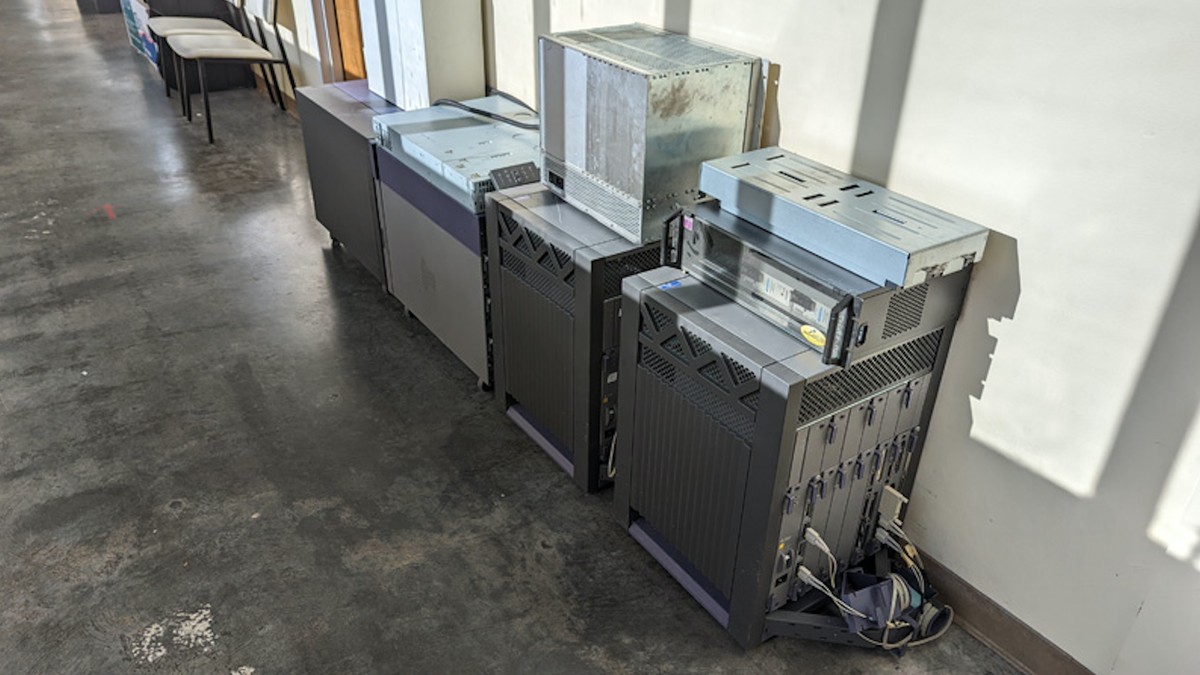At the turn of the millennium, millions of people embarked on an epic search for intelligent aliens.
Their platform was SETI@home, a public program run by the Berkeley SETI Research Center that invited volunteers to analyze astronomical images and flag unusual radio signals that might indicate an otherworldly intelligence. It rapidly became one of the most successful citizen scientist projects of all time, linking more than a million computers across more than 230 countries.
Now, more than 20 years later, the computer hardware that launched this epic quest is facing an unknown fate as either scraps in a salvage heap or, perhaps, a museum artifact. Eric Korpela, an astronomer and the director of SETI@home, announced that the obsolete Sun Enterprise series servers that initially linked the network were sent to Berkeley’s Excess and Salvage department, and that the Digital Linear Tape (DLT) tapes used to store the project’s first six years of data would likely be discarded as well, a development he called a “bittersweet milestone” in a recent post on the project’s forum.
“These machines are no longer made by a company that no longer exists and are running on an operating system that no longer exists,” Korpela said in a call.
“They served admirably for a decade or more,” he continued. “I think it’s kind of sad if they just fade into history without some evidence that they were there. We run through things so fast that they get lost unless we make a direct effort to save them.”
Since his post in March bidding farewell to the hardware, Korpela has fortunately received some interest in the items from the Large Scale Systems Museum in New Kensington, Pennsylvania. But their potential rescue is still far from assured, as they occupy a nebulous middle age for computing technology: Old enough to be defunct, but too young to be considered ancient digital artifacts.
Regardless of where the tapes and servers end up in the future, they are clearly beloved emblems of a storied internet past, judging by the wistful comments and suggestions from other forum members who responded to Korpela’s post, which also spun off into a thread on the subreddit r/DataHoarder.
“That makes me sad,” said one Redditor. “I joined in 1998 or 1999 and the idea of distributed computing blew my mind. I contributed to the project until the very end.”
When Korpela and his colleagues first released SETI@home to the public back in May 1999, they had no idea it would be so instantly popular, or that it would come to be one of the most successful internet science projects.
“We were actually initially surprised at the reaction,” Korpela recalled, noting that the project was initially the second largest internet user within the University of California (after, of course, Napster—it was 1999 after all). “We weren’t the first public distributed-computing project; that goes to people looking to crack encryption or to find prime numbers,” on sites such as distributed.net.
“We expected, when we started, to get maybe 10,000 people interested in running this, and instead, we got millions,” he continued. “I guess there’s something about searching for extraterrestrials that captures the public imagination in ways that trying to break a one-sentence encrypted message that someone made does not.”
The flood of eager alien hunters overwhelmed the single desktop that the team had set up to run the project. That’s the origin story of the servers that now await a new home, which were donated by Sun Microsystems to handle the load.
Over the course of the next two decades, more than five million people searched for aliens in images captured by Puerto Rico’s Arecibo Observatory, which has since sadly collapsed. The intense interest it attracted inspired the development of Berkeley Open Infrastructure for Network Computing (BOINC), which is now one of the largest computing grids in the world.
Meanwhile, the project’s forums buzzed with activity that ranged from friendly discussion to conspiracy theories and offline romances. Some people who met in the SETI@home community even ended up getting married, according to the Atlantic.
But in recent years, the project lost steam after a string of challenges, including funding shortages and shifting internet policies across the world, such as the measures imposed by China’s Great Firewall. In March 2020, Korpela and his colleagues indefinitely suspended the crowdsourcing portion of the project and are currently working on research into the massive trove of data which, as of this time, has not produced any clear evidence of aliens.
“There are lots of signs of intelligence in our data,” Korpela said. “As far as we can tell, all of it, so far, has been human intelligence. We see radars and radio stations and lots of stuff near the telescope. We’re still looking, we’re still going sifting through the data, and there’s a lot to look at, but so far we haven’t seen any signs that E.T. is in there.”
For anyone who might suspect the team is just holding out on us, Korpela offered a practical assurance: “If we had found aliens, there’s no incentive to hide it because I would never have to worry about funding again,” he said. “SETI@home would still be going, probably, if we had found something—anything.”
But while the project hasn’t yet uncovered any alien civilizations, it has made a difference to intelligent life here on Earth. Korpela describes its meteoric rise and slow fade out as “a microcosm of the internet as a whole.”
Wherever the servers and tapes ultimately end up, they have left their mark in the real world as the connective tissue of a community that tried to answer one of the ultimate scientific questions: Are we alone in the universe? We may well be, but SETI@home has demonstrated, at least, that we are not alone here on Earth.
